Tashkent Bazars
Tashkent Bazars
Trade is what the peoples of Uzbekistan have had in their blood since ancient times. After all, it was through these places the Great Silk Road ran. The art of trading is still something that these people know and can be witnessed in the skill of trading and bargaining in the bazaars of Tashkent. Bazaars in Tashkent, Uzbekistan and in Central Asia are more than just places to buy the necessary things but they are also places of social interaction and building networks with friends while having a drink in a tea house.
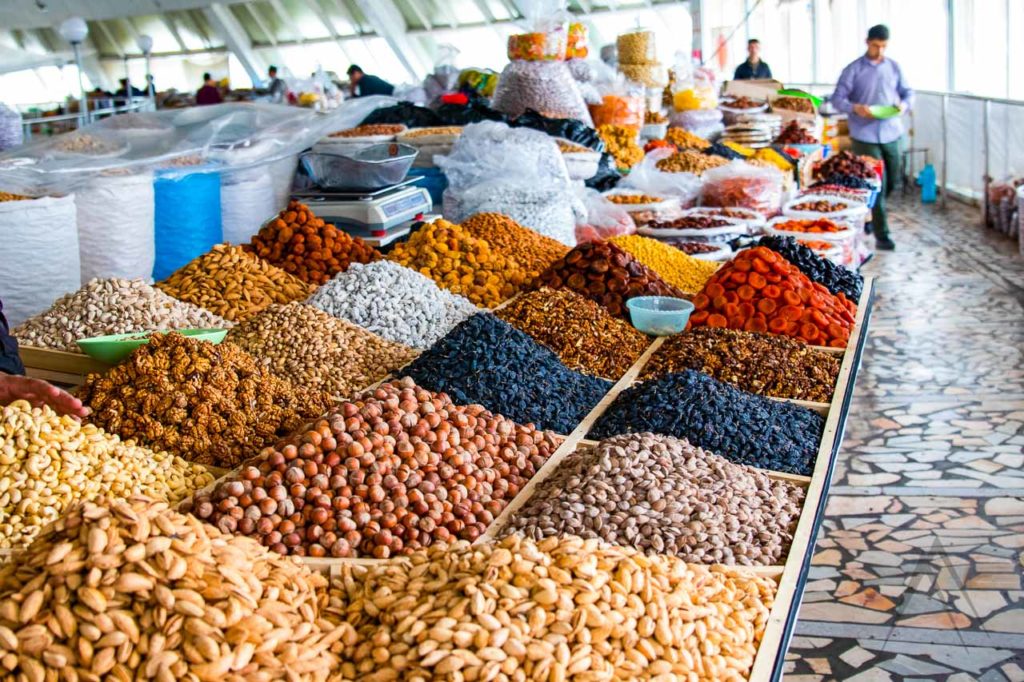
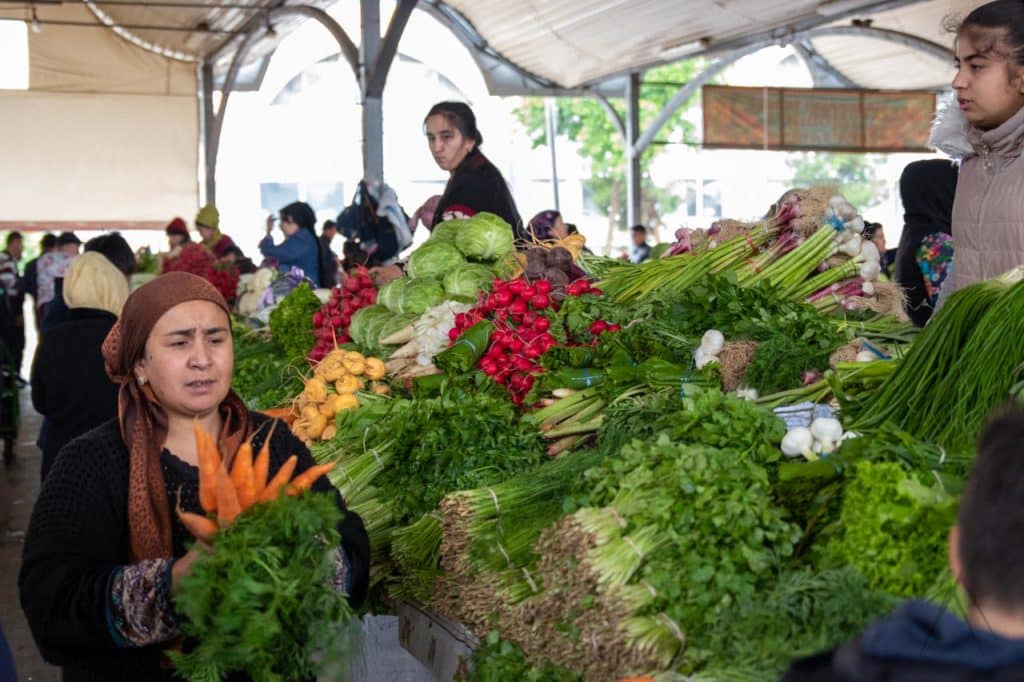
Chorsu Bazar
Chorsu is the most famous bazar of Tashkent and known for its dome shape of the distinctive blue “Uzbek” color of the many medieval domes. It is found in the heart of the historical and architectural complex dating back to the 16th – 18th centuries, consisting of Kukeldash and Khoja Ahrar madrasas and the Jami mosque.
In the old times Chorsu was a whole trading city by itself. There were countless rows of goods, small shops, baths, caravanserais, teahouses and other institutions related to trading. Chorsu bazaar also traces its history back to ancient times and back in the days of the Silk Road, a brisk trade was conducted on this same place.
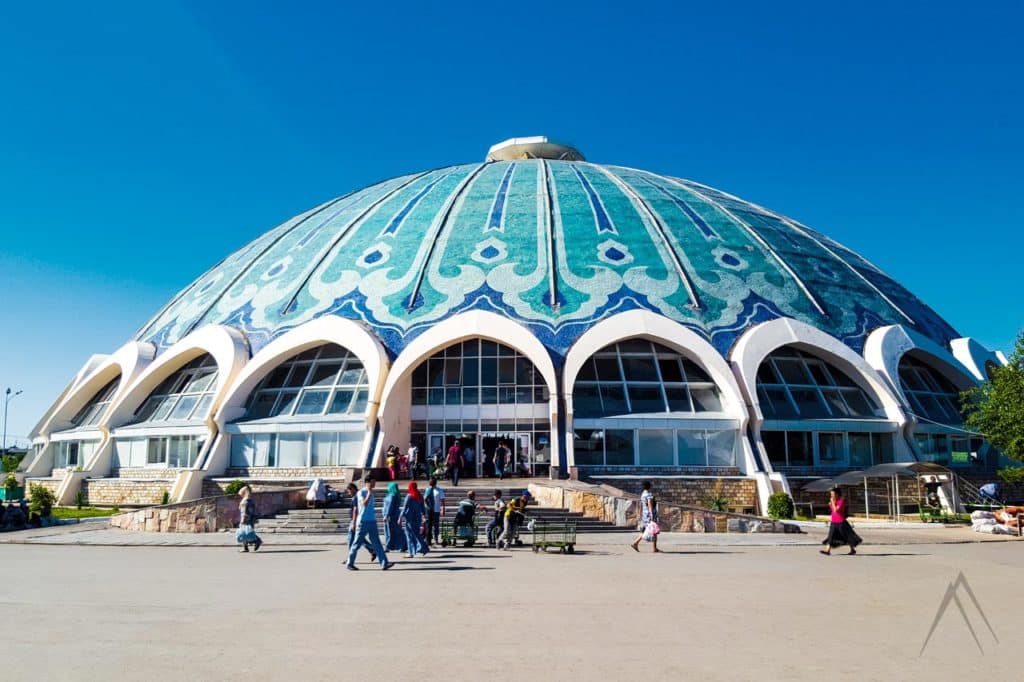
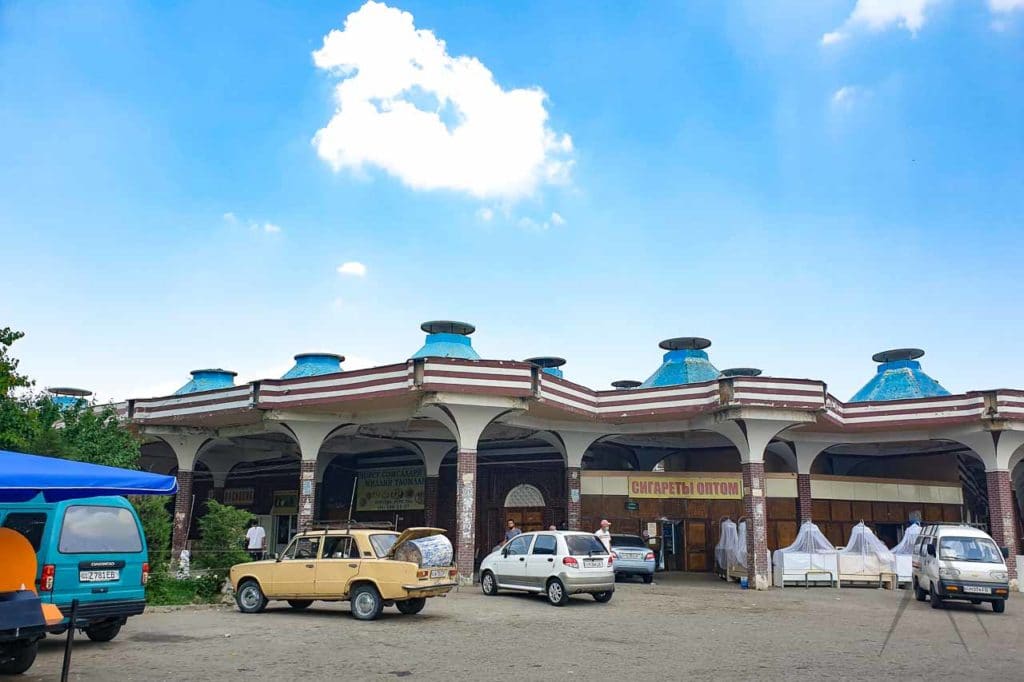
There are actually 3 bazaars in Chorsu: Grocery (inside the dome), clothing and handicraft rows that are located around the main dome, some with light structures just on the streets and some inside larger buildings.
For souvenirs, especially scarves made from adras (a fabric with an Uzbek ornaments, which has long been a national treasure and part of the country’s culture) and just for any clothes, go to Chorsu. It is located in the intersection of Beruni Avenue and Lailitogon Street.
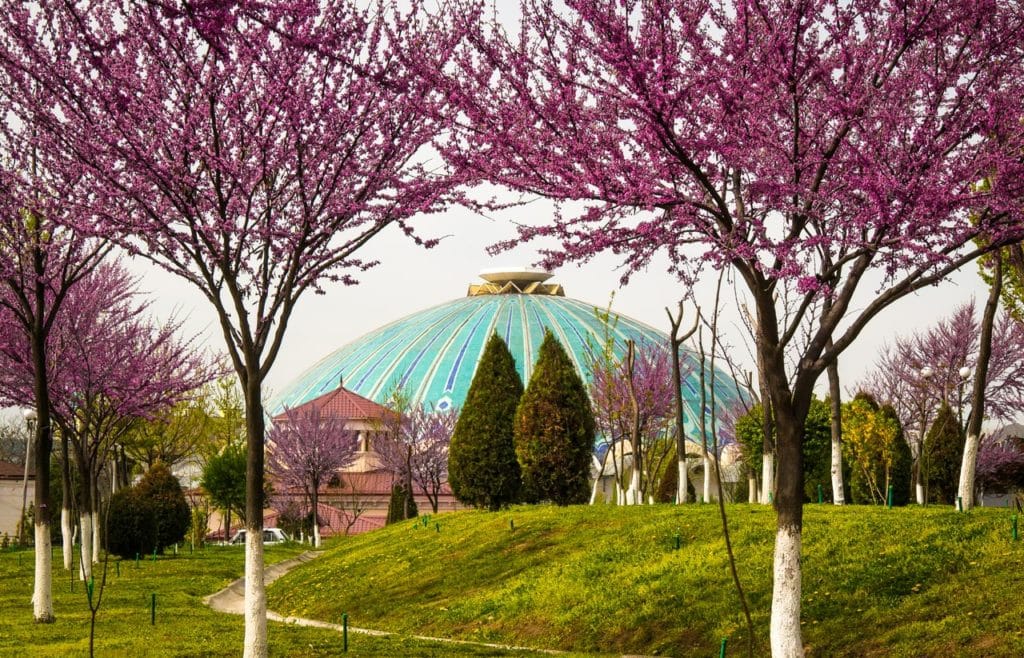
Oloi / Alay Bazar
People say that there is something mystical in oriental bazaars, it has stories, character, even their special spirit reigns here. Alai or also known as Oloy and Alaysky bazar is one of the oldest and famous bazaars of Tashkent. The name “Alaysky” comes from the name of the mountain “Oloy”.
The history of the Alai bazaar begins in those distant times when the Great Silk Road passed through the territory of Central Asia. The bazaar has been recently restored and reopened. The current appearance of the Alai market has changed dramatically. That famous arch, which for many years met customers in front of the entrance, is no longer there. The new appearance of the bazaar simply amazes with its architectural decoration and design solutions. Here, as in an oriental tale, everything is stylized and extremely beautiful. At the same time, there is also a modernist style, which does not interfere with the oriental flavor, but on the contrary, harmoniously complements it.
The first part of the bazaar, as before, consists of two floors under a high covered canopy with several rows of shops that offer buyers jewelry and various jewelry of local and imported products. Because of the covered darkened space, the builders decorated everything here in light colors.
Signs of Uzbek and world brands emerged above the entrance to jewelry stores. The spacing between the rows is very wide, so you can easily see each product. It also makes it easier to navigate in all this variety, there are corresponding signs above the product lines, stating where they sell what – dried fruits, tomatoes, almonds, and so on. A large covered canopy, sheathed with plastic, is supported by hefty rounded columns, stylized as oriental ceramics.
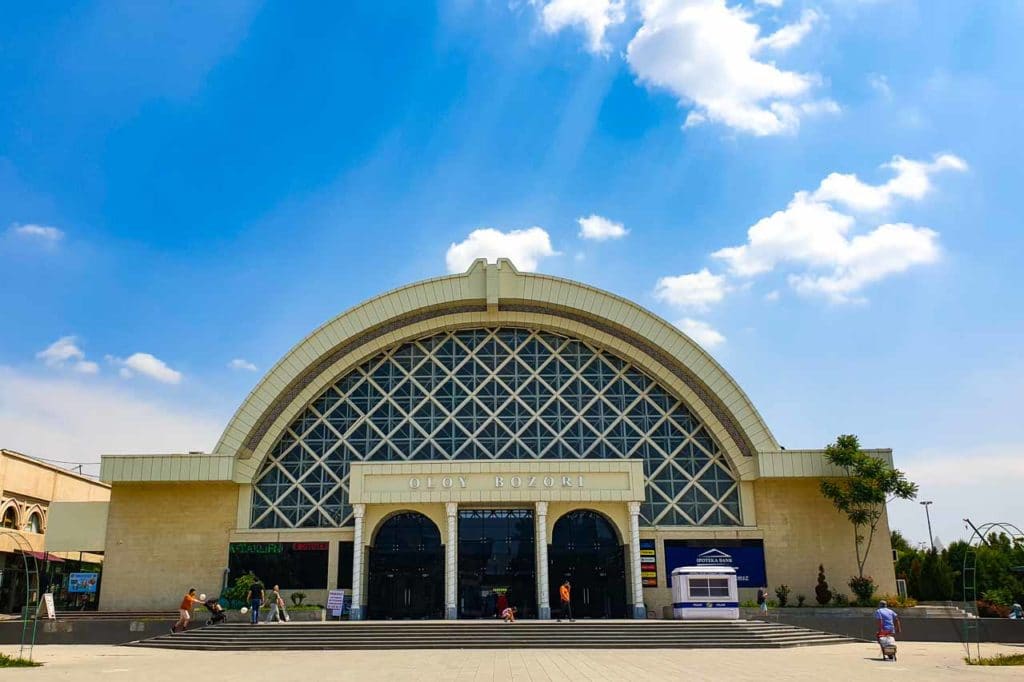
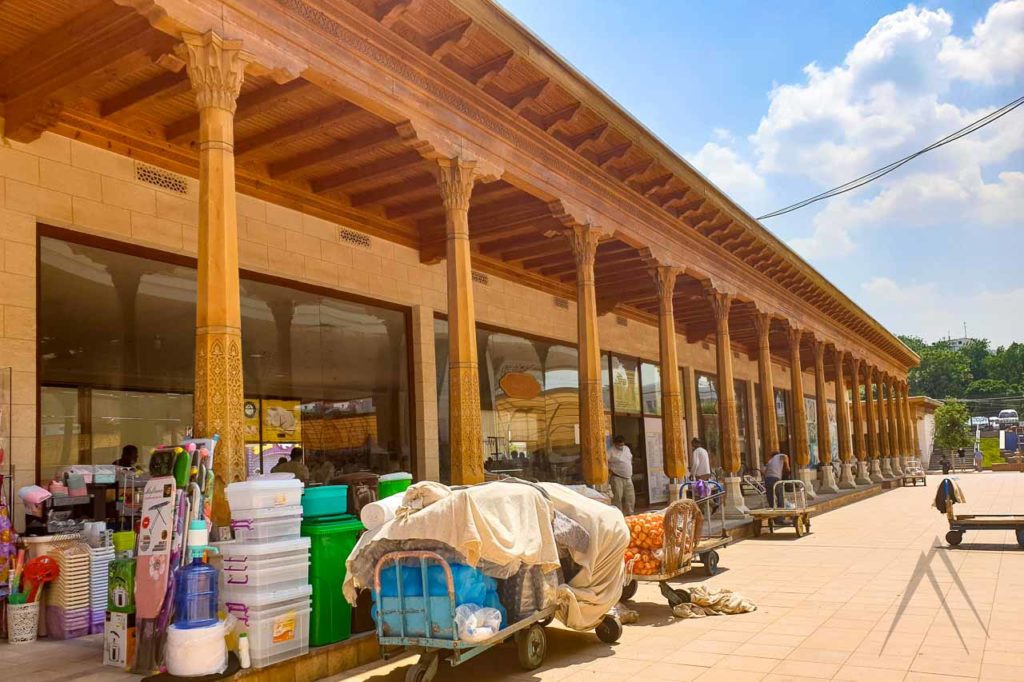
Here you can buy local vegetables and fruits, and for exotic lovers, there are rows with fruits that are not typical for Uzbekistan: bananas, pineapples, oranges, mangoes, kiwis and others.
Various oriental dishes are also sold here: navat, kazinaki, parvarda, pashmak, raisins, dates and much more. Nearby there is a wide selection of all kinds of nuts: walnuts, cashews, peanuts, pistachios, as well as various types and varieties of seeds – almonds, salted apricot seeds, and more. Some of the presented goods are grown and manufactured directly on the territory of the republic, the other part is brought from near and far abroad.
Yangiabad Bazar
Yangiabad Bazaar is one of the largest flea markets in the post-soviet countries focused mainly on old items. The bazaar stock is divided into four main sections: The flea market, new items, food area and the dog market. The first one mentioned is the largest one, which is known for a huge selection of old items like radio components, computers, Soviet paraphernalia, car parts, scrap metal, household appliances, souvenirs and jewelry, antiques, books, secondhand, etc.
Tashkent residents sell here everything that is left at home or passed on inheritance and remained unclaimed. Prices range from the lowest to above average. The bazaar is located Eastwards from the Tashkent city center, along the Achangaran road next to the Metro station 3-Bekat. It is more popular among the Tashkent residents and nearby settlements, you won’t meet many tourists here which of course can be seen as a good thing and a guarantee of an authentic experience.
Kuylyuk Bazar
Bazaar Kuylyuk is one of the largest food markets in Tashkent. It was built in the Soviet years and has expanded over time, today it occupies not only the area under the roof but also outside nearny the building. Most likely the place for the construction was not chosen by accident since the intersection of the Bektemir highway and the TKAD connects the urban and rural parts. Here traders are mostly farmers who farm in the land nearby. The products are always fresh and the amount of products is huge with prices lower than the Tashkent store prices.
As in any other bazaar, you can be fascinated with the smell of the fresh products or oriental spices together with the smells of local foods like pilaf, shish kebab and Korean salads. Not that almost everything that is sold in the bazaar can be tried by customers free of charge to be sure of the quality of for example of a watermelon.
Mirabad Bazar
Mirabad (Or Mirobod) market is situated in the central part of Tashkent and well known for the expats who live in this area. It is easy to recognize this bazaar by the green canopy that covers the entire territory of the market, protecting the vendors and customers alike against heat in the summer and giving shade from the winter’s rain and snow. There is also the text “Mirobod Dehqon Bozori” in the Uzbek language written with large letters.
The current area of Mirabad bazaar was previously a hospital for soldiers, therefore the former name of the bazaar was “Hospital”. Mirobod bazar is located in the corner of the Mirabad and Nukus streets South – Southeast from the very center of Tashkent.
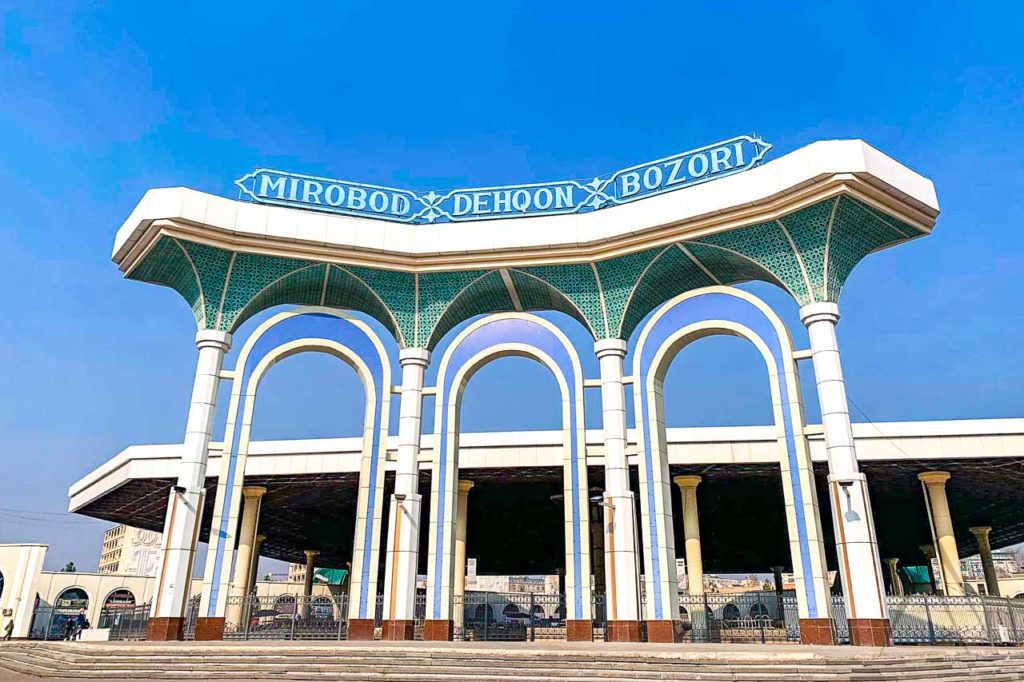
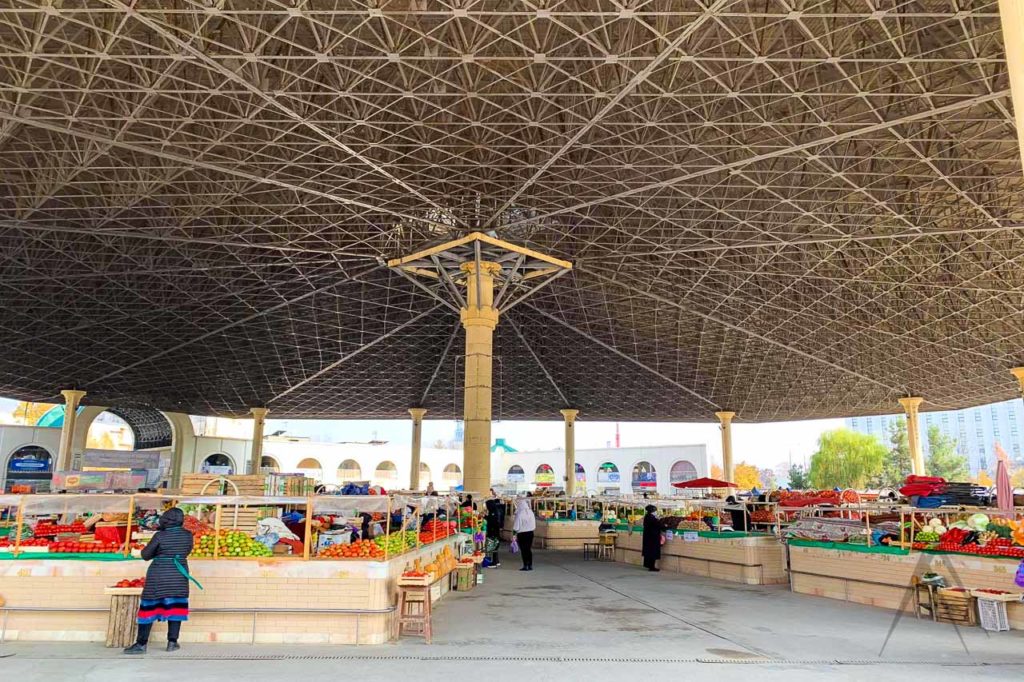
Thanks again for photos amsund.
Farkhad Bazar
Farhad bazaar is located in the middle of two large areas of Tashkent – Chilanzar and Akmal-Ikramovsky districts, at the junction of two central main streets: Farkhad and Lutfiy. Farhad farmer bazaar officially opened in 1971, and since then it has held the crown of the cheapest food market in Tashkent.
The Farhad bazaar was fully reconstructed in 2008. The reconstruction transformed about 4ha areas of the bazaar and improved the appearance of the bazaar. After the reconstruction the pavilions have been modernized and the small fountain appeared as well as each product has its sector. Even management was digitalized and automatized through the computerized trading spots and vendors are served by 6 mini-banks. The sanitary condition of the Farkhad market has also improved. Now it is a very comfortable and convenient place for a family to buy fresh food. Furthermore, due to the large variety of goods, the prices are much lower than in other markets in Tashkent. The price difference is explained by the proximity of the bazaar to suburban agricultural land. They sell mainly fruits, vegetables, cereals and other food products.
Other sights & destinations in Tashkent
Page updated 19.11.2020